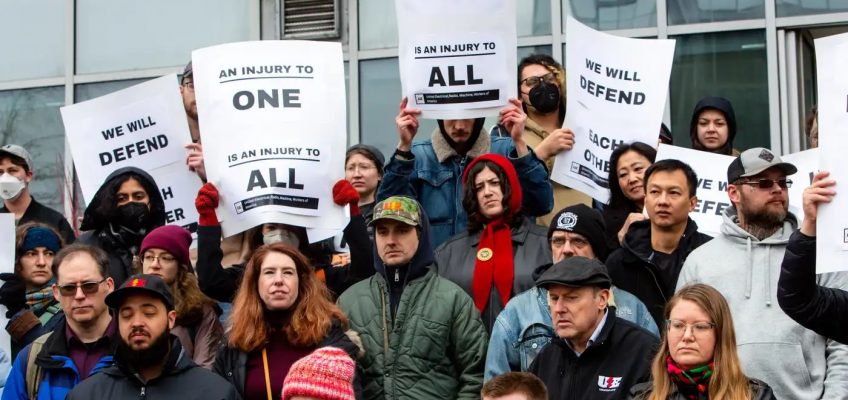By DAVID RISING, Associated Press
BANGKOK (AP) — The death toll from the earthquake that hit Myanmar has risen to more than 1,700 as more bodies have been pulled from the rubble, the country’s military-led government said Monday.
Government spokesman Maj. Gen. Zaw Min Tun told state-run MRTV that another 3,400 have been injured and more than 300 were missing. The military had previously reported 1,644 dead but did not provide specific figures in its update.
The 7.7 magnitude earthquake hit at midday Friday, causing widespread damage, including in the capital Naypitaw and the second largest city, Mandalay.
It was the time of Friday prayers for the country’s Muslim minority during the holy month of Ramadan, and some 700 worshippers were killed when mosques collapsed, said Tun Kyi, a member of the steering committee of the Spring Revolution Myanmar Muslim Network. It was not clear whether they were already included in the official count of casualties.
Tun Kyi said some 60 mosques were damaged or destroyed when the earthquake struck, and videos posted on The Irrawaddy online news site showed several mosques toppling during the quake, and people fleeing from the areas.
In Mandalay, 270 monks were taking a religious exam at the U Hla Thein monastery when the quake hit, crumpling the building.
Rescue workers at the scene Monday said 70 were able to escape, but 50 have already been found dead and 150 are still unaccounted for.
Little is known about the damage in many places
The true number of people killed and injured across the regions hit is thought to be possibly many times the official figures, but with telecommunication outages and extreme challenges to movement around the country, little is known about the damage in many areas.
“We’re really not clear on the scale of the destruction at this stage,” Lauren Ellery, deputy director of programs in Myanmar for the International Rescue Committee, told The Associated Press.
There is a state of emergency in six regions, and Ellery said her teams on the ground and their local partners are currently assessing where needs are the greatest, while providing emergency medical care, humanitarian supplies and other assistance.
“They were talking about a town near Mandalay where 80% of the buildings were reportedly collapsed, but it wasn’t in the news because telecommunications have been slow,” she said.
“Even in areas where there isn’t so much impact, our partner reported to us on Saturday that there were landslides stopping them reaching one of the villages.”
The earthquake, centered near Mandalay — a city of some 1.5 million, brought down buildings and damaged other infrastructure like the city’s airport.
An artificial intelligence analysis of satellite images of Mandalay by Microsoft’s AI for Good Lab showed 515 buildings with 80%-100% damage and another 1,524 with between 20% and 80% damage. Another 180,004 buildings had between 0% and 20% damage, and the AI4G Lab noted that the assessment was a “preliminary guide and will require on-the-ground verification.”
The World Health Organization said it has reports of three hospitals destroyed and 22 partially damaged in the region.
“The scale of deaths and injuries is not yet fully understood and the numbers are expected to increase,” the U.N. agency said in a report.
“The earthquake’s devastation has overwhelmed healthcare facilities in the affected areas, which are struggling to manage the influx of injured individuals. There is an urgent need for trauma and surgical care, blood transfusion supplies, anesthetics, essential medicines, and mental health support.”
A lack of heavy machinery has slowed search and rescue operations, forcing many to slowly search for survivors by hand in the relentless heat, with daily temperatures above 104 Fahrenheit.
Myanmar’s neighbors and allies are among those lending aid
International rescue teams from several countries are now on the scene, including from Russia, China, India and several Southeast Asian countries.
On Sunday, an Indian team jackhammered through slabs of fallen concrete at one site in Mandalay, cutting rebar reinforcement with an angle grinder powered by a portable generator as they sought to reach lower levels.
They could be seen bringing out one covered body and loading it into an ambulance.
The European Union, Britain, Australia, New Zealand, South Korea and others have announced millions of dollars in aid, either directly or through local partners and international organizations.
U.S. President Donald Trump has said Washington would help, but so far there has been no known assistance to Myanmar.
A small number of American military personnel were sent to assist in Bangkok, where the earthquake shook the Thai capital and killed at least 18 people, many at a construction site where a partially built high-rise collapsed.
Another 33 have been reported injured and 78 missing, primarily at the construction site near the popular Chatuchak market.
Heavy equipment was shut down and authorities urged onlookers to be silent as they used machines to try and detect any signs of life from under the rubble.
Bangkok Governor Chadchart Sittipunt told reporters at the scene that signs had been detected Sunday night, though experts could not determine whether it had been machine error.
Nonetheless, he said he still had hope survivors would be found.
“Even if one life is saved, it is worth all the effort,” he said.
Myanmar, also known as Burma, sits on the Sagaing Fault, a major north-south fault that separates the India plate and the Sunda plate.
The earthquake occurred when a 125-mile section of the fault ruptured, causing widespread damage along a wide swath of territory down the middle of the country, including Sagaing, Mandalay, Magway and Bago regions and Shan State.
Beyond the earthquake damage, rescue efforts are complicated by the bloody civil war roiling much of the country, including in quake-affected areas. In 2021, the military seized power from the elected government of Aung San Suu Kyi, sparking what has since turned into significant armed resistance.
Government forces have lost control of much of Myanmar, and many places are dangerous or impossible for aid groups to reach. More than 3 million people have been displaced by the fighting and nearly 20 million are in need, according to the United Nations.
Ellery, of the International Rescue Committee, noted that the area worst hit by the earthquake was already seriously damaged by flooding last year in which many lost homes, and is also where many of the country’s internally displaced people have sought refuge.
Since the earthquake, many people have been sleeping outside, either because their homes have been destroyed or they are worried that the continuing aftershocks might bring them down.
With the monsoon rains starting in May, finding people shelter was going to be a major challenge going ahead, she said.
“But right now we’re focused on the immediate response,” she said.
Associated Press journalists Jerry Harmer and Jintamas Saksornchai in Bangkok, and Jon Gambrell in Dubai, United Arab Emirates, contributed to this report.




